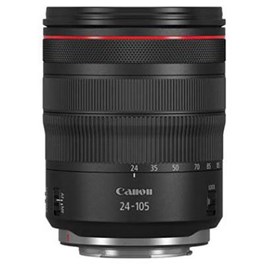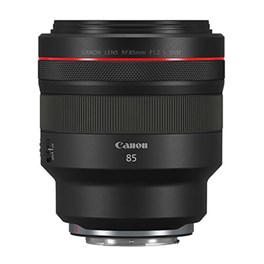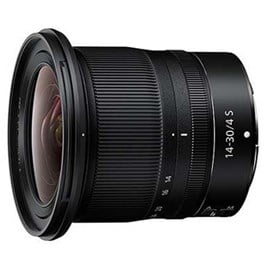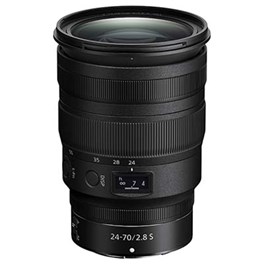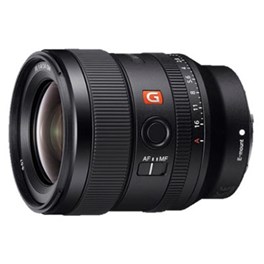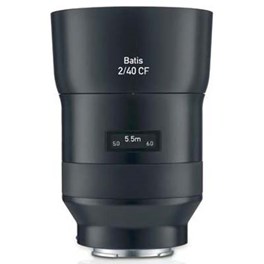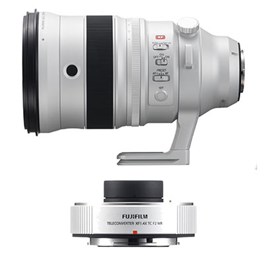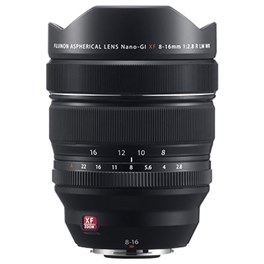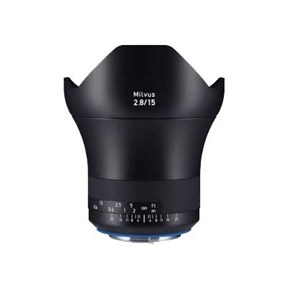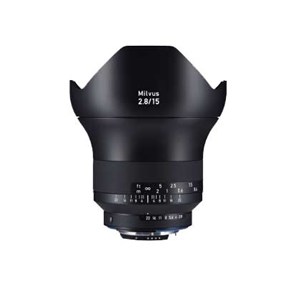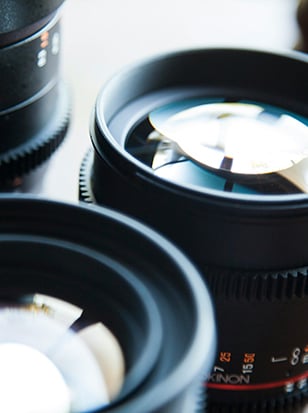
Welcome to our guide to the best camera lenses you can buy – though of course, that’s a subjective matter. Different lenses are useful for different things, after all, and one photographer’s favourite lens may gather dust at the bottom of another photographer’s bag.
As such, the lenses here aren’t meant to be a comprehensive selection of everything you need to own – they’re just the lenses that have impressed our team in testing. So, we’ve got a mix of zooms and primes, wide-angles and telephotos, cheap lenses and premium glass, for all the major mounts on the market.
We’ve divided the guide up by manufacturer to make it easier to navigate – so whatever system you’re using, there should be options here for you at a range of prices.
Best Canon Lenses
Canon’s mirrorless RF-mount boasts some absolutely exceptional lenses in its line-up, representing the cutting edge of imaging technology. However, don’t count out the well-populated DSLR EF-mount, which has the advantage of years and offers plenty of options for the discerning photographer and videographer. Here are a few of the Canon lenses that have most impressed our team recently.
|
Lens elements: 18 elements in 14 groups Maximum aperture: f4 Image stabilisation: Yes Autofocus motor: Ultrasonic (USM) Minimum focus distance: 45 cm |
Pros:
Cons:
|
Hugely versatile, covering a focal range from wide to telephoto, Canon’s RF 24-105mm f4L IS USM Lens is great for photographers and filmmakers alike, balancing quality and convenience with portability. Its super-fast and quiet Nano USM means focusing action is swift and silent, while the 5-stop image stabiliser makes the lens a fearsome proposition in low light. It takes advantage of the increased 12-pin communication of RF-mount, providing a superb companion to any EOS R camera.
Built tough and light, with L-series quality, the RF 24-105mm f4L IS USM Lens is excellent for travel for professionals and enthusiasts alike. Anyone who is using the mirrorless EOS R system will find this lens to be a tremendously handy companion; with its blend of incredible image quality and easy portability, it is a winner in all sorts of situations.
|
Lens elements: 23 elements in 19 groups Maximum aperture: f2.8 Image stabilisation: Yes Autofocus motor: Ultrasonic (USM) Minimum focus distance: 1.2 m |
Pros:
Cons:
|
Canon refined the ever-popular workhorse 70-200mm lens by adding Air Sphere Coating (ASC) anti-reflection technology to this Mark III version, which significantly reduces flare and ghosting. Like all L-series lenses, this model is robust and well-built, able to handle the rough-and-tumble day to day of an outdoor working photographer. With 3.5 stops of image stabilisation, a 9-bladed diaphragm and a close focusing distance of 1.2m, the Canon EF 70-200mm f/2.8L IS III USM is one of the best all-rounders in the business.
|
Lens elements: 13 elements in 9 groups Maximum aperture: f1.2 Image stabilisation: No Autofocus motor: Ultrasonic (USM) Minimum focus distance: 85 cm |
Pros:
Cons:
|
The fastest portrait prime in the Canon EOS R system, Canon’s RF 85mm f/1.2L USM Lens combines a short telephoto focal length with a super-fast f/1.2 aperture. It can produce images with a shallow depth of field, attractive defocused areas and beautiful bokeh, and thanks to its USM autofocusing technology its focusing action is smooth and near-silent. Canon has included Blue Spectrum Refractive (BR) optics and an aspheric lens element to eliminate colour and spherical aberrations, while the lens control ring allows for control over ISO, aperture and shutter.
Built with the kind of quality L-series lenses are famous for, this is a professional-grade lens that’ll stand up to the challenges pro photographers and enthusiastic amateurs will put it through. Exceptionally sharp, this is a top-quality prime lens for taking advantage of the technologically advanced EOS R cameras.
Best Nikon Lenses
In this section, we’ve highlighted a few of the Nikon Z lenses that have really impressed us. Nikon’s Z-mount is going from strength to strength, with a number of brilliant lenses available at a selection of prices (not just at the top end). As such, the system is proving popular with amateurs and enthusiasts as well as professional photographers.
|
Lens elements: 14 elements in 12 groups Maximum aperture: f4 Image stabilisation: No Autofocus motor: Stepping Motor (STM) Minimum focus distance: 28 cm |
Pros:
Cons:
|
Nikon adds an ultra-wide zoom to its Z-mount lens line-up, covering the range of 14mm to 30mm with a constant maximum aperture of f/4 throughout the entire zoom range. This lens is fully equipped to take advantage of the full-frame sensors of Z-mount cameras, and at just 3.5 inches in length and 485g in weight, it’s the perfect size for travelling.
Nikon has included Nano Crystal Coat in order to suppress flare and ghosting, and the latest Nikon Stepping Motor (STM) technology to provide fast, silent and accurate autofocus. The control ring is customisable, meaning it can be assigned to manual focus, exposure compensation or aperture control, depending on user preference. It’s also designed to be fully compatible with the in-body 5-axis VR system included in certain Z-mount bodies, and allows for the attachment of screw-on filters on its front element, expanding versatility and useability in challenging conditions.
|
Lens elements: 17 elements in 15 groups Maximum aperture: f2.8 Image stabilisation: No Autofocus motor: Stepping Motor (STM) Minimum focus distance: 38 cm |
Pros:
Cons:
|
The fast NIKKOR Z 24-70mm f/2.8 S for Nikon’s full-frame Z mount provides superb optical performance from corner to corner, boasting an advanced optical design of 17 elements in 15 groups with anti-reflective ARNEO and Nano Crystal coatings for superior light transmission and images with vivid colour rendition. Its control ring and Ln function button are fully customisable, allowing you to choose your preferred settings to get the lens handling just the way you want it.
With a tough build to protect from dust and moisture, this is a workhorse lens in a useful focal range that’s perfect for general-purpose photography and video work. Delivering professional-grade results, this is an excellent lens to pair with a Z-mount full-frame mirrorless camera.
Best Sony Lenses
Sony’s mirrorless E-mount range is extremely well-populated, both with Sony-made lenses and third-party options. This makes it a rich and rewarding system to explore, whether you’re shooting stills, video or a mixture of both. While Sony’s “G Master” lenses sit at the top of the range, there are also plenty of more affordable choices – our picks cover just a fraction of what’s out there.
|
Lens elements: 13 elements in 10 groups Maximum aperture: f1.4 Image stabilisation: No Autofocus motor: Direct Drive Super Sonic Wave Motor (DDSSM) Minimum focus distance: 24 cm |
Pros:
Cons:
|
We’re huge fans of Sony’s G Master lenses, and this wide-angle prime from the series is a superb achievement in optical engineering. With 13 optical elements, two XA elements, and ED glass and Nano AR coating, the lens provides outstanding quality even with high-resolution cameras like the A7R. It also produces vivid bokeh in the defocused areas of an image, thanks to its wide f/1.4 aperture.
The lens also promises limited sagittal flare at the edges of its frame – which makes it useful for astrophotography – and comes sporting a Direct Drive Super Sonic Motor (DDSSM focus drive) for fast and accurate autofocus. Despite all this, it’s extremely compact, measuring just 75.4mm x 92.4mm and weighing only 445g, meaning it’ll balance well with Sony’s light mirrorless cameras.
|
Lens elements: 9 elements in 8 groups Maximum aperture: f2 Image stabilisation: Yes Autofocus motor: Linear Motor Minimum focus distance: 24 cm |
Pros:
Cons:
|
With a close focusing distance of 24cm, superb optical quality thanks to a sophisticated internal construction, and a quiet autofocus system that balances speed and precision, the Zeiss 40mm f2 CF Batis Lens is great for Sony E-mount cameras. The Zeiss T* coating ensures excellent light transmission, with high micro contrast and a fantastic look to your shots, while the barrel of the lens also has an OLED display that shows range and depth of field information.
This fixed focal length of 40mm makes this a solid all-rounder lens, great for capturing street scenes and for reportage/documentary photography. It gives that signature Zeiss look that’s the product of more than a century of visual engineering experience, allowing you to focus on expressing your creativity and producing images of peerless quality.
|
Lens elements: 7 elements in 6 groups Maximum aperture: f1.8 Image stabilisation: No Autofocus motor: Stepping Motor (STM) Minimum focus distance: 45 cm |
Pros:
Cons:
|
Speed is the name of the game with this Samyang AF 45mm f1.8 Lens, making it the perfect companion for Sony’s E-mount Alpha cameras. It’s also got a minimum focusing distance of 45cm, so you can get closer to your subjects, and weighs an extremely slight 162g which means it’s great for travel.
Its internal construction incorporates 7 lens elements in 6 groups, with two Aspherical optics and one Extra-Low Dispersion element, ensuring superior image quality and consistently sharp images across the edges of the frames. Its 9-bladed diaphragm works well with its f/1.8 maximum aperture, allowing you to produce images with attractively shallow depth of field and beautiful bokeh. This lens provides the warm colour rendition that is a known characteristic of Samyang lenses, and pairs beautifully with any of Sony’s full-frame E-mount cameras to produce vivid images full of detail.
|
Lens elements: 7 elements in 6 groups Maximum aperture: f1.8 Image stabilisation: No Autofocus motor: Stepping Motor (STM) Minimum focus distance: 45 cm |
Pros:
Cons:
|
Sony’s G Master lens range has a well-deserved reputation for incredible sharpness and detail, and this telephoto prime is no exception. Delivering exceptional corner-to-corner resolution even at its maximum aperture setting of f/1.8, this is a high-performance lens that’s perfect for portraits, events, weddings, sports and a multitude of other general-purpose applications. If you’re a pro or enthusiast photographer using one of Sony’s full-frame E-mount cameras, you’ll get a great deal of value out of this lens.
Its four XD linear motors mean its autofocus that’s outstandingly fast, precise and accurate, as well as being vibration free, while XA elements and Super ED glass ensure its images are super-sharp and detailed. There are also plenty of other features that pro users will enjoy, such as a focus range limiter switch.
|
Lens elements: 23 elements in 17 groups Maximum aperture: f2.8 Image stabilisation: Optical SteadyShot (OSS) Autofocus motor: XD Linear Motor Minimum focus distance: 2.7 m |
Pros:
Cons:
|
One of the lightest super-telephotos ever made, the Sony FE 400mm f2.8 OSS G Master Lens is a supreme optic for full-frame E-mount cameras, providing a blend of uncompromising image quality with incredible reach and impressive portability. Built to G Master standards, it’s a great lens to have in all sorts of shooting situations, particularly wildlife and sports shooting, with its newly developed XD Linear Motor providing extremely fast, precise, quiet AF.
Equipped with all the power and sophistication that has made the G Master series famous, this is a superb lens for maximising the potential of your full-frame Sony Alpha camera.
Best Fujifilm Lenses
Everyone says that one of the best things about shooting on Fujifilm is the lenses. The mirrorless X system includes some absolutely standout, brilliant optics, full of bokeh and character. Whether you shoot landscapes, portraits, street, products or whatever else, there will definitely be multiple fantastic Fujifilm lenses to tempt you. Here are just a few of our favourites.
|
Lens elements: 10 elements in 8 groups Maximum aperture: f2.8 Image stabilisation: No Autofocus motor: Stepping Motor (STM) Minimum focus distance: 17 cm |
Pros:
Cons:
|
The Fujifilm XF16mm f2.8 R WR is a weatherproof lens that’s fantastic for landscape and architecture work, providing an equivalent focal length of 24mm in full-frame terms on Fujifilm’s APS-C sensors. Its design of 10 elements in 8 groups includes aspherical elements that have been carefully positioned to suppress aberrations and distortion, and the lens itself weighs just 155g and measures just 45.4mm in length, making it a superb choice for travel.
The inner focusing system of the XF 16mm f2.8 R WR Lens uses a stepping motor to drive its lightweight focusing elements, ensuring focusing action that is fast, silent and accurate, even when dealing with challenging subjects. Shoot confidently even in difficult conditions – this is the perfect lens for realising your creative visions with Fujifilm X cameras.
|
Lens elements: 19 elements in 14 groups Maximum aperture: f2 (effective f2.8 with teleconverter) Image stabilisation: Optical Image Stabilisation (OIS) Autofocus motor: Linear Motor (LM) Minimum focus distance: 1.8 m |
Pros:
Cons:
|
Fujifilm’s X-series cameras are known for pairing style with sophistication, and the lenses more than match this reputation. A welcome addition to the line-up has been the XF 200mm f2 R LM OIS. This feature-rich telephoto optic boasts a construction that features nineteen lenses in fourteen groups, including three ED (extra-low-dispersion elements) and a hefty five stops of intelligent image stabilisation, which is able to recognise different shooting conditions and adjust accordingly. The maximum aperture of f2 means it has impressive light-gathering capabilities, making for a lens that’s useful in a huge range of shooting situations.
|
Lens elements: 20 elements in 13 groups Maximum aperture: f2.8 Image stabilisation: No Autofocus motor: Linear Motor (LM) Minimum focus distance: 25 cm |
Pros:
Cons:
|
An outstanding wide-angle zoom for the Fujifilm X series, the Fujifilm 8-16mm f2.8 XF R LM WR Fujinon Lens uses cutting-edge optical technology to produce images with exceptional edge-to-edge sharpness. It’s perfect for landscapes, architecture, interiors, night-time scenes, astrophotography and more. Fujifilm has also included field curvature correction and double Nano-GI coating, ensuring superior light transmission, while its magnesium-alloy lens barrel is resistant to dust and moisture.
Providing an equivalent focal range of 12-24mm in full-frame format, the Fujifilm 8-16mm f2.8 XF R LM WR Fujinon Lens uses linear motors to provide ultra-fast and quiet autofocus. This is an outstanding lens for pushing your X-series camera further and getting unique images with an exaggerated perspective.
Best L-Mount Lenses
The L-mount alliance was originally between Panasonic, Sigma and Leica, however more brands and manufacturers have jumped on board since then. As you might expect, that combination has already yielded some pretty fantastic lenses for the system, and this development shows no sign of slowing down.
|
Lens elements: 16 elements in 13 groups Maximum aperture: f4 Image stabilisation: Optical Image Stabilisation (OIS) Autofocus motor: Linear Motor Minimum focus distance: 30 cm |
Pros:
Cons:
|
One lens in particular we’ve loved for L-mount is the Panasonic S 24-105mm f4 Macro OIS Lens. It’s incredibly versatile, providing a focal range spanning wide-angle to mid-telephoto, and is as well-suited for general-purpose photography as it is for close-up macro work. When paired with Lumix S cameras, it can make use of Panasonic’s 6-stop image stabilisation technology to vastly reduce image blur from handheld camera-shake.
Ready for any shooting conditions, the Panasonic S 24-105mm f4 Macro OIS Lens is dust- and splash-resistant, and it’s also as suited for video work as it is for stills, with built-in focus-breathing suppression during recording. The focus clutch mechanism also allows for quick switching from autofocus to manual mode.
|
Lens elements: 23 elements in 17 groups Maximum aperture: f4 Image stabilisation: Optical Image Stabilisation (OIS) Autofocus motor: Linear Motor Minimum focus distance: 92 cm |
Pros:
Cons:
|
Another pro-grade lens for Panasonic’s full-frame S system, the Panasonic S Pro 70-200mm F4 O.I.S. Lens is also able to take advantage of the 6-stop image stabilisation system when paired with L-mount cameras. Its body is hardy and weatherproof, and its sophisticated internal construction produces images with beautiful sharpness, vivid bokeh and minimal vignetting.
Its useful workhorse focal length makes it great for general-purpose photography and video shooting. Professionals and enthusiasts alike will find this a fantastically useful lens in all sorts of situations, from portraits to sports, events and outdoor work.
Best Multi-Mount Lenses
Finally, we’ve rounded up a few of our favourite lenses that are available for multiple different systems. These include options for mirrorless cameras and DSLRs, with a range of focal lengths and form factors.
|
Lens elements: 3 elements in 2 groups Maximum aperture: f3.5 Image stabilisation: No Autofocus motor: Manual Focus Minimum focus distance: 35 cm |
Pros:
Cons:
|
You can see all the mounts available here.
Admit it, sometimes you do want style over sharpness. The Lensbaby Sol 45mm fulfils this brief and more, with its tilting design allowing the easy creation of images with dramatic blur surrounding a pin-sharp area of focus. A generous 8.5 degrees of tilt allows for a lot of creative freedom when creating your image – whether you’re shooting on a full-frame or APS-C camera – and once you’ve got it sorted, a twist-activated centre-locking system allows you to keep it in place.
It’s worth remembering that photography isn’t just about getting the most technically perfect images possible – it’s good to let your creativity run wild too, and the Lensbaby Sol 45mm is the ideal tool for the job. You can see all the mounts available here.
|
Lens elements: 17 elements in 12 groups Maximum aperture: f1.4 Image stabilisation: No Autofocus motor: Hyper Sonic Motor (HSM) Minimum focus distance: 100 cm |
Pros:
Cons:
|
Everyone loves a high-quality prime with a wide aperture, and the Sigma 105mm f/1.4 DG HSM Art lens is a superb example of the genre. It’s the longest lens in the high-quality Art range, and is perfect for portraiture work and low-light photography, thanks to that generous f/1.4 maximum aperture that enables the creation of smooth bokeh. It promises top-notch optical quality too, allowing you to make the most of even high-resolution sensors. Every lens mount option for this lens can be found here.
|
Lens elements: 10 elements in 6 groups Maximum aperture: f1.4 Image stabilisation: No Autofocus motor: Stepping Motor (STM) Minimum focus distance: 50 cm |
Pros:
Cons:
|
Blending a lightweight build with fantastic image quality, this lens from Sigma’s Contemporary range is designed for the adventurous photographer, perfectly complimenting the small, take-anywhere nature of many Micro Four Thirds cameras as well as Sony E-mount. It provides an equivalent focal length of roughly 85mm in full-frame terms, meaning it’s a perfect portrait optic, and this is bolstered by its maximum aperture of f/1.4, perfect for creating shallow depth of field as well as working in low light.
The mount of the lens has been designed to be dust- and splash-proof, with rubber sealing, and the autofocus action is super smooth, making it perfect for shooting video as well as stills. Its construction of 10 elements in 6 groups ensures tip-top optical quality, and its 9-bladed rounded diaphragm helps produce flattering images with smooth delineation between the areas in and out of focus. It has a minimum focusing distance of 50cm too, making it also great for close-up work.
|
Lens elements: 15 elements in 12 groups Maximum aperture: f2.8 Image stabilisation: No Autofocus motor: Manual Focus Minimum focus distance: 25 cm |
Pros:
Cons:
|
Zeiss Milvus lenses are designed to deliver the uncompromising utmost in image performance. Precise optical engineering, of the type Zeiss is famous for, has been used to create lenses that produce images sharp from edge to edge, and corner to corner. All of them have sophisticated coatings to reduce stray light, delivering high-contrast images, and also provide focus rings with an exceptional level of play, allowing the user to be extremely precise with their focusing.
The widest in the Milvus family, the 15mm f/2.8 is an ideal choice for any avid landscape or architecture photographer. It may offer a super-wide perspective with an angle of view of 110°, however, Zeiss’s careful engineering ensures that images are still as clear and sharp as anything, with a top-quality focusing mechanism that moves smoothly and is a joy to use. Image performance is equally stellar throughout the focusing range, in large part thanks to a floating elements design.

How to choose the best lenses
If you’re not sure which lenses are right for you, here are some things to think about when you’re choosing.
Lenses for capturing far-away details
Very often, it’s not possible to get as close to our subject as we’d like. This can be due to restricted access, the limitations of our photography gear, a lack of time, or some other factor outside of our control.
While some things are non-negotiable, there are always ways we can improve our chances of getting great pictures of subjects in the distance.
Telephotos
Big, powerful lenses tend to spring to mind when we think of capturing distant subjects. It’s worth knowing though that this doesn’t necessarily have to involve the likes of high-end 600mm beasts, which can leave you little change from £10,000. You can look into more modest offerings of up to around the 300mm mark.
By using something like a 70-300mm zoom, for example, you will have great flexibility when it comes to framing. There’s also the convenience to consider – these lenses are great for photo walks where you only want to carry one lens to cover a range of distances.
Wideangle / shorter focal-length lenses
There is nothing to say that far-away details can’t be captured with smaller focal-length lenses. In fact, shooting this way can actually be extremely advantageous; dramatic skies can be included for impact, your subjects can be given context by including their surroundings, and scale can be shown for full effect. The possibilities are many.
Lenses in the range of around 10-35mm ideally fit the bill here, and options are available for all camera systems.
Teleconverters
Another way to get closer to distant details is to use a teleconverter. In a nutshell, these range extenders fit between your camera body and the lens, typically multiplying the focal length by 1.4x or 2x.
Compatibility should be checked before purchase, however, as not all lenses/functions work in conjunction with all seemingly suitable converters.
An option for fixed-lens cameras is to fit a conversion lens at the front end. In this instance, your best starting point is to check whether such a dedicated product is available from the manufacturer of your particular camera.
Camera/lens support
It’s worth briefly mentioning camera support. Especially when working with larger focal lengths, you will notice on occasions that camera-shake can be an issue when viewing a scene through your camera. A method of keeping things steady is often going to be required.
A tripod is an obvious solution, but this is not always feasible. A monopod might be a good compromise in certain shooting situations, but there are other options…
Beanbags can be a great alternative and are often overlooked. They aren’t suitable in all situations, however, when you have a convenient resting surface to hand, they are perfect. They can be quickly perched on top and will conform to the shape of your camera/lens setup.
Bean bags can be used on car doors, window ledges uneven ground and more, allowing your camera to be precisely levelled.
Compact and portable, beanbags are available either pre-filled or as an empty liner into which you add your filling of choice (rice, sand and polystyrene balls all work well). Alternatively, you can make your own from scratch, tailoring it to your own requirements.
Lenses for wide-angle pictures
Let’s run through some of the options available to anyone considering the wider end of the spectrum.
Fixed-length (prime) lenses
When talking about lenses, it’s often worth remembering to use “nature’s zoom” – i.e. your feet – in order to change perspective for creative pictures. Want a wider shot? Take a few steps backwards!
This approach is a given when using prime lenses– without a zoom, it falls to the photographer to move around in order to get the best angle of view.
Prime lenses of all focal lengths have many advantages, not least their compact size and reduced weight when compared to zooms. This makes them ideal for anyone who wants to travel with the minimum of bulky kit, for example when heading outdoors or going on holiday.
Prices vary depending on a range of factors, but expect to pay more for fast lenses offering a maximum aperture of around f/1.8. If the expense is a deal-breaker for you, it is worth looking at the slower alternatives (i.e. those with a narrower maximum aperture) as well as third-party models, all of which tend to come with a lower price tag.
Wide-angle zooms
For a little more flexibility, you might like to consider a wide-angle zoom, which will allow you to adjust framing from one position while still retaining a broad angle of view. While these lenses tend to be larger and heavier than their prime counterparts, they aren’t prohibitively so.
As with all lenses that operate at the wide end of the focal length range, you do need to be aware of distortion, especially when photographing people. For example, when framing group shots, you’ll see how people can appear to be bending out towards the edges of the frame – clearly not a good look.
With that said, going in close to an individual with a wide-angle can be very effective for drawing the viewer into the scene – just do it with a little sensitivity!
Super-wide-angle and fisheye lenses
When we get into the realms of extreme wide-angle, we’re talking about more specialist applications. As a consequence, these lenses come with a hefty price tag and should be used thoughtfully and with care.
The front elements are nearly always very exposed, and the fact that it isn’t possible to attach a protective filter to the front makes them especially vulnerable.
Wide-angle adapters
For compact camera users, wide-angle adapters are available. Some adapters attach to the front of the camera to physically convert the angle of view, whilst others work as go-between attachments, onto which you then put wide-angle lenses.
The benefit of these is clearly that they offer a more cost-effective solution than buying a new camera with a desirable lens attached. However, you should be aware that image quality can suffer (such as visible vignetting, distortion and even chromatic aberration).
Filters and wide-angles
With the exception of the most extreme models, wide-angle lenses can nearly always take a filter. As well as offering protection for the front element, filters allow you to push the boundaries of creativity. For example, a wide shot showing a colourful subject against a rich, blue sky on a sunny day can be enhanced dramatically when a polarising filter is added.
Square, slot-in filters offer added versatility, as you simply match a wide angle adapter ring to the filter thread of the lens in use and clip on your filter holder. It’s worth noting that these do a better job of removing the vignetting which can sometimes appear when standard rings are used on wide-angle lenses.
FAQs
What are the different types of camera lenses?
Camera lenses come in various types, each suited for specific photography needs. Prime lenses have a fixed focal length and are known for their sharpness and low-light performance. Zoom lenses offer a variable focal length, providing versatility by covering a range of focal lengths. Wide-angle lenses have a short focal length, making them ideal for landscapes and architectural photography. Telephoto lenses have a long focal length, perfect for capturing distant subjects like wildlife and sports. Macro lenses are designed for close-up photography, allowing you to capture intricate details of small subjects.
How do I choose the right camera lens for my needs?
Choosing the right lens depends on your photography goals. For portraits, prime lenses with a focal length of 50mm to 85mm are ideal. For landscapes, wide-angle lenses ranging from 16mm to 35mm work best. If you're into sports or wildlife photography, telephoto lenses with focal lengths of 70mm to 300mm or more are recommended. Macro lenses with 1:1 magnification are great for close-up photography. You can also consider factors like aperture, image stabilisation, and compatibility with your camera body when selecting a lens.
What is the difference between a lens's focal length and aperture?
Focal length, measured in millimetres (mm), determines the lens's field of view. Short focal lengths (wide-angle) capture a broader scene, while long focal lengths (telephoto) bring distant subjects closer. Aperture, represented by f-numbers (e.g., f/1.8), indicates the size of the lens's opening. A lower f-number means a larger aperture, allowing more light into the camera and creating a shallower depth of field, which is useful for achieving blurred backgrounds.
How does lens stabilisation work and why is it important?
Lens stabilisation is often referred to as optical image stabilisation (OIS). This compensates for camera shake by using gyroscopic sensors and lens elements that move to counteract motion. This technology is crucial for achieving sharp images in low-light conditions or when using long focal lengths, as it reduces the blur caused by slight hand movements. It allows photographers to use slower shutter speeds without sacrificing image clarity.
Can I use any lens with any camera body?
Not all lenses are compatible with every camera body. Compatibility depends on the camera's mount type and sensor size. For example, Canon EF lenses fit Canon DSLRs, while Canon RF lenses are designed for Canon mirrorless cameras. Additionally, full-frame lenses can generally be used on crop sensor bodies, but crop sensor lenses may cause vignetting when used on full-frame cameras. Always check the lens mount and sensor compatibility before purchasing a new lens.
How do we decide?
Our in-house photography experts, store staff and partners all work collaboratively to pour over our guides and tips articles. We also consider emerging trends and customer feedback to make sure our guides are always up-to-date and reflective of what people are truly looking for. By curating only the best products, our guides provide trustworthy recommendations, making it easier for customers to make informed choices with confidence.
If you would like more advice on any purchase our contact centre staff are here to help. Alternatively, you can reach us via email or social media. And don't forget. If you were to purchase anything based on our recommendations you'll be covered by our full returns policy
Sign up for our newsletter today!
- Subscribe for exclusive discounts and special offers
- Receive our monthly content roundups
- Get the latest news and know-how from our experts

